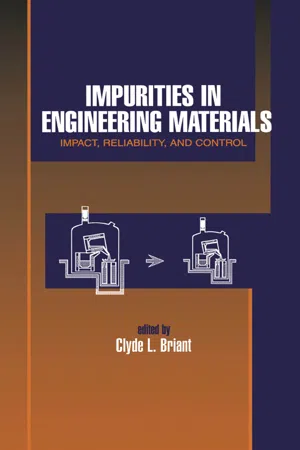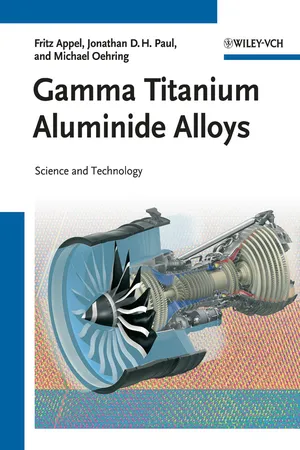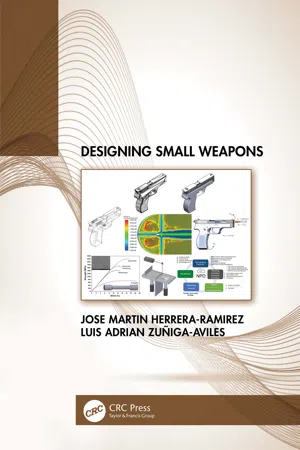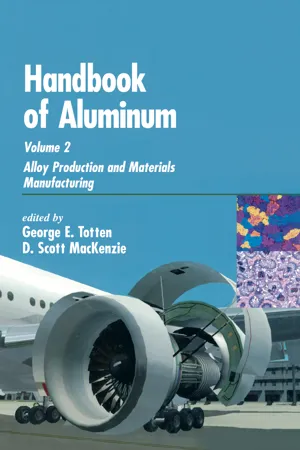Technology & Engineering
Solid Solution Hardening
Solid solution hardening is a strengthening mechanism in materials science where the addition of solute atoms into the crystal lattice of a metal increases its strength and hardness. This occurs when the solute atoms are dissolved in the host metal, causing distortion in the lattice structure and hindering dislocation movement. The resulting solid solution exhibits improved mechanical properties, making it suitable for various engineering applications.
Written by Perlego with AI-assistance
Related key terms
Related key terms
1 of 4
Related key terms
1 of 3
4 Key excerpts on "Solid Solution Hardening"
- eBook - ePub
Impurities in Engineering Materials
ImPatt, Reliability, & Control
- Clyde Briant(Author)
- 2017(Publication Date)
- Routledge(Publisher)
9Solid Solution Hardening by ImpuritiesTetsuo Mohri and Tomoo Suzuki*Hokkaido University Sapporo, JapanI Introduction
Solid Solution Hardening is a typical hardening behavior observed commonly in all classes of metallic alloy systems including off-stoichiometric intermetallic compounds. The origin of Solid Solution Hardening is usually ascribed to the interaction between a dislocation and impurities contained in a solid solution that act as obstacles to a moving dislocation. Besides substitutional and interstitial foreign elements, one may include even a vacancy, a forest dislocation, and other defects as impurities that have the potential to cause hardening. The magnitude and extension of the interaction force depend on the kind of impurities. The primary mission of the study of Solid Solution Hardening is to clarify the elementary interaction mechanism and to estimate the magnitude of the interaction force for each obstacle on the basis of dislocation theory.In general, the critical resolved shear stress (CRSS) of a solid solution cannot be given as a simple sum of an elementary interaction force over all impurities encountered by a dislocation line. This is because a non-linear dislocation line, due to a finite magnitude of line tension, is subject to various averaging processes during multiple interactions with impurities on a slip plane. Thus, the study of Solid Solution Hardening requires a statistical treatment to clarify the functional dependence of CRSS on the concentration and distribution of an impurity and the extension of its interaction field, the line tension of a dislocation line, etc., without going into the details of the mechanism of interaction with an impurity.The two subjects described above concern the interactions of a single dislocation line with impurities. In order to analyze and understand experimentally observed Solid Solution Hardening behavior, however, one also needs to take the dislocationdislocation interactions into account, since the actual deformation process is driven by dislocations that have a density on the order of 106 – 1012 cm/cm3 - eBook - ePub
Gamma Titanium Aluminide Alloys
Science and Technology
- Fritz Appel, Jonathan David Heaton Paul, Michael Oehring(Authors)
- 2011(Publication Date)
- Wiley-VCH(Publisher)
Compared with the large amount of mechanical data, little information is available about the work hardening of TiAl alloys. This is certainly in part due to the brittleness of the material, which persists up to relatively high temperatures. However, in compression it is possible to produce work hardening over large plastic strains, which provides a significant potential to strengthen the material. The competitive processes to work hardening are recovery and recrystallization. Thus, the rate at which the material hardens depends on the imparted mechanical strain energy and its release by diffusion-assisted processes. Taken together, these factors lead to a complex dependence of the work hardening on temperature. From the technical point of view work hardening is important because it is involved in various metallurgical processes, such as forming, shaping, diffusion bonding, and surface hardening. For all these processes detailed knowledge about the deformation-induced defect structures and their thermal stability is required. The available information about this subject will be assessed in the following sections.7.2.1 Work-Hardening PhenomenaWork-hardening mechanisms will be characterized in terms of glide obstacles controlling the velocity and the slip path of the dislocations, analogous to the procedure that has been described in Section 6.4. Within this approach the flow stress σ (ε) beyond yielding may be described as [25](7.3)ΔG is the Gibbs free energy of activation, k the Boltzmann constant and M T the Taylor factor. σ 0 represents a stress contribution from dislocation mechanisms operating at the onset of yielding and is considered to be independent of strain ε. Micromechanisms associated with σ0 have been discussed in Section 6.4.σμ(ε) is an athermal stress contribution to work hardening representing long-range dislocation interactions. σ *(ε) is an effective or thermal stress component due to thermally assisted overcoming of deformation induced short-range glide obstacles. V D (ε) and ΔF D - eBook - ePub
- Jose Herrera-Ramirez, Luis Zuñiga-Aviles(Authors)
- 2022(Publication Date)
- CRC Press(Publisher)
8 Heat Treatments and Surface Hardening of Small Weapon Components
DOI: 10.1201/9781003196808-88.1 Introduction
A heat treatment is the process that involves heating a material in the solid state up to a specific temperature for a sufficient time (usually called soaking), followed by cooling at an appropriate rate. A heat treatment is an essential stage within the entire manufacturing process of a workpiece. Most of the versatility shown by materials comes from their heat treatment, which influences on their microstructure and, finally, improves their physical and mechanical properties, such as strength, hardness, elasticity, and wear resistance, among others.Each type of material has its own procedures to be heat-treated. Thus, certain practices will be followed for steels, which will be different for those of nonferrous alloys, ceramics, or even polymers. It is important to note that the design and control of heat treatment procedures to produce the required properties in a material are deeply based on the use of phase diagrams.This chapter covers the basis of heat treatments of steels and aluminum alloys, focusing on those alloys used in the manufacture of small weapon components. The principles of surface hardening, which alters the metal surface properties, are also covered. A case study on the heat treatments of steel is presented here.8.2 Heat Treatments of Steels
As stated in Chapter 7 , the basis for understanding the heat treatment of steels is the Fe-Fe3 C phase diagram. Figure 8.1 shows such a diagram in the range of steels (~0.008–2.14 wt% C), where the A1 , A3 , and Acm lines, also specified as Ae1 , Ae3 , and Aecm - eBook - ePub
Handbook of Aluminum
Volume 2: Alloy Production and Materials Manufacturing
- George E. Totten, D. Scott MacKenzie, George E. Totten, D. Scott MacKenzie(Authors)
- 2003(Publication Date)
- CRC Press(Publisher)
On the other hand, solid solution atoms hinder the dislocation arrangement and cause an anchoring force both on the low angle boundaries (recrystallization nucleation) and on the high angle boundaries (recrystallization growth), making difficult their movement. Considering the global effect of the solute in solution, on work hardening, at the beginning (nucleation) and growth of the recrystallized regions, we may state that, in general, the higher the solute content in solid solution, greater will be the recrystallization delay. It must be pointed out, nevertheless, that the effect of small additions of solute to metals of high purity (dilute solutions) is more accentuated than the effect of additions in solutions which already present high solute content, as illustrated in Table 3. Analyzing the literature on aluminum alloys containing precipitate dispersions published in the last 50 years, there are both evidences related to cases where the presence of dispersed precipitates delayed recrystallization [ 57, 58, 59, 60 ], as well as cases where recrystallization has been accelerated [ 61, 62 ], in relation to the solid solution without precipitates. Doherty and Martin [ 63, 64, 65 ] working with Al—Cu alloys with different levels of Cu and various precipitate dispersions, both in single crystals and in polycrystals, showed that: (a) in a matrix containing a coarse precipitate, recrystallization occurred faster than in the case of a solid solution without precipitates; (b) in fine precipitate dispersions, recrystallization was increasingly delayed until it became even slower than the recrystallization of the solid solution; and (c) a fourfold decrease in the mean free path between precipitates raised 10 5 times the 50% recrystallization time and increased the final grain size by a factor of 10 3. Table. 3 Influence of Impurities on the Recrystallization Temperature of Some Metals (From Ref
Index pages curate the most relevant extracts from our library of academic textbooks. They’ve been created using an in-house natural language model (NLM), each adding context and meaning to key research topics.
Explore more topic indexes
Explore more topic indexes
1 of 6
Explore more topic indexes
1 of 4



